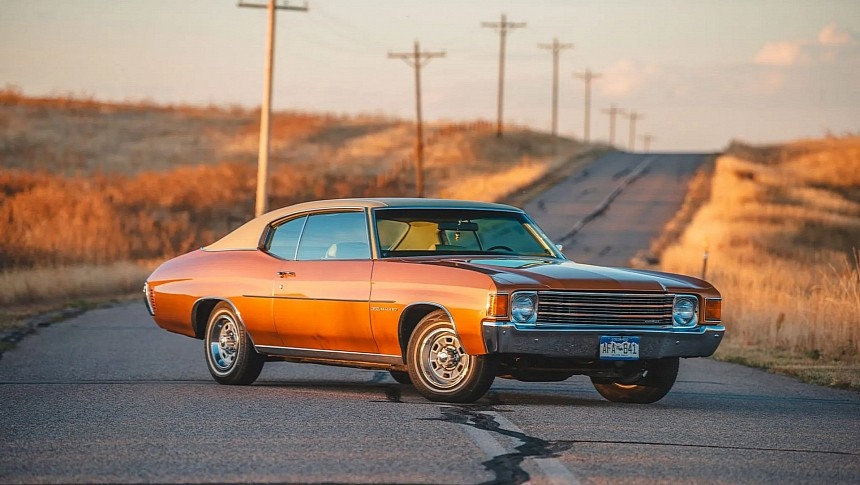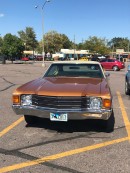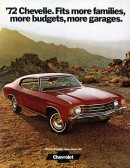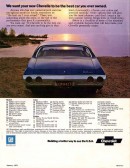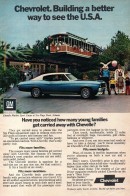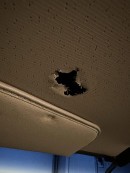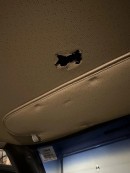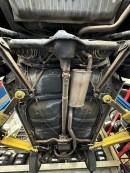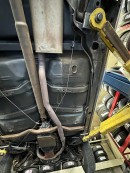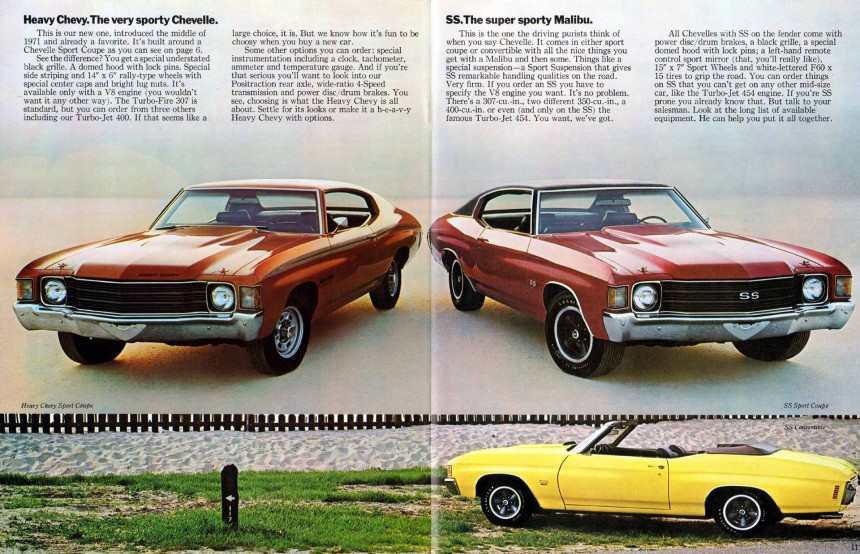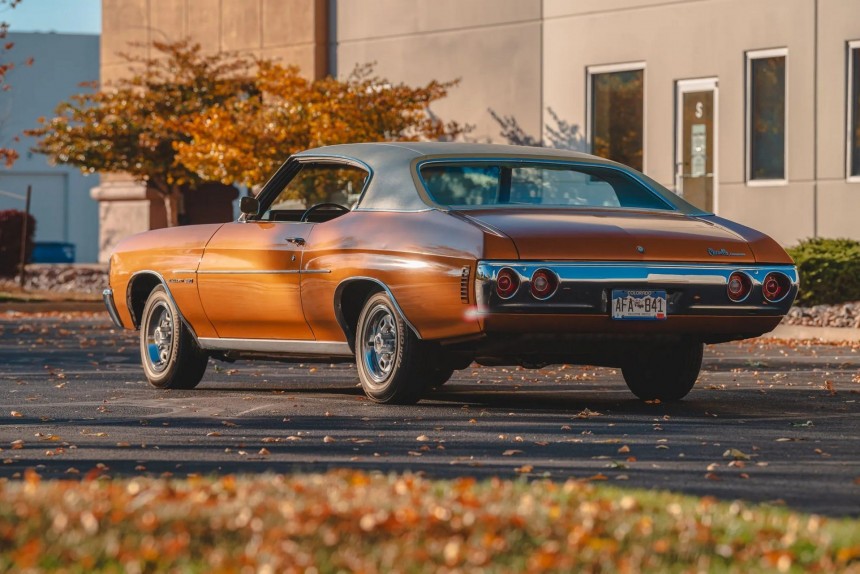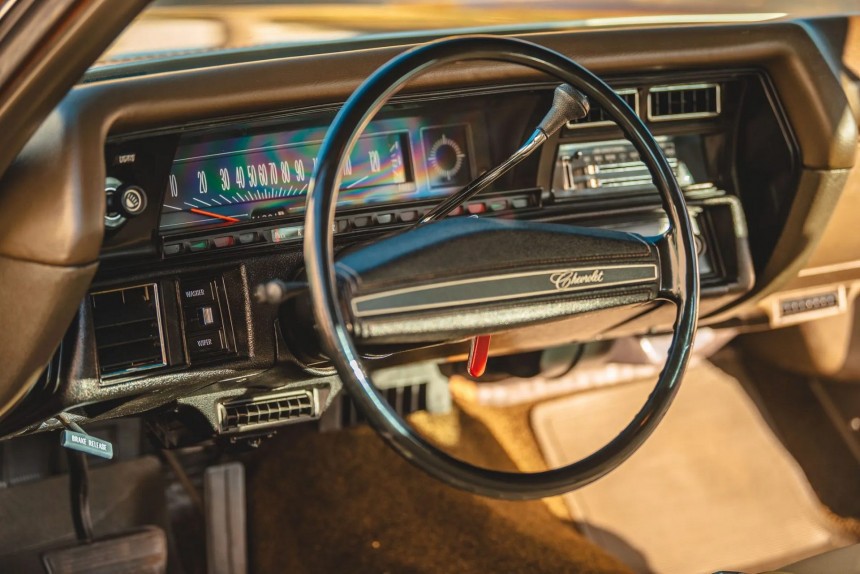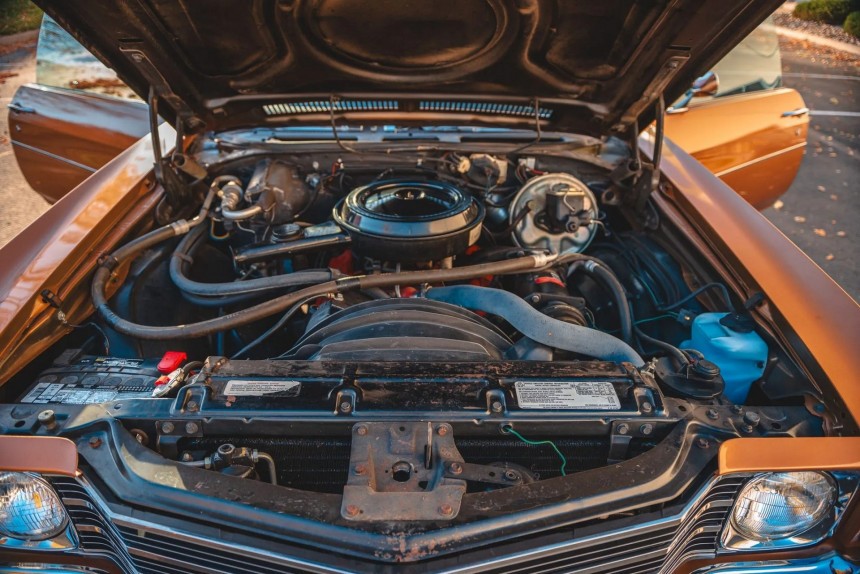The early seventies were a confusing period in the American automotive evolution: the decade debuted on the most favorable auspices, with the peak of the muscle car age right in 1970, only to free-fall downhill from there. Detroit made the necessary – and painful – adjustments to adapt to the new, horsepower-hostile environment but had to sacrifice a good deal of its tire-terror nameplates. The Chevrolet Chevelle was among the decimated models, although it took the Bowtie several years to let go of its icon.
The Chevelle was born out of necessity – General Motors noted that Rambler was scoring big with its compacts and quickly followed suit (with the other two Bigs, the Blue Oval, and Ma’ Mopar). After the Corvair and the Chevy II (that would spawn the Nova), another model was sent to wage war against Ford and Chrysler – the Chevelle of 1964.
Chevrolet put the new Chevelle on the intermediate level between the small Chevy II and the full-size Impala to avoid cannibalization and internal competition amongst its models. The new segment was referred to as ‘intermediate’ (go figure!), and the recipe worked. The model lasted three generations – spanning 14 years until the end of 1977 – and left its mark on the ever-more-crowded landscape of piston-centric America.
The Chevelle (a portmanteau between Chevy and Impala) was Chevrolet’s first mid-sized model – or, in pompous parlance, the “right-sized” offer that had proven immensely popular starting with the 1955 models. Like many other Detroit legends, the Chevelle offered a multitude of body styles, trims, and power packs throughout its existence, but one of them stands above all (in terms of production; regarding other criteria, it’s a different debate altogether).
The Malibu was the king of the hill in the Chevelle tug-of-war games; the series had it all: the looks, the goodies, the value, everything. Well, almost everything: the SS top-tier performance was a separate affair outside of Malibu’s reach. In all fairness, the SS started as a hot package for the Malibu before becoming a separate series in 1966, lasting until the discontinuation of the second generation of the Chevelle in 1972.
To keep things simple and perfectly easy to understand, the literature of the era – read it in the gallery – advertised the SS as ‘the super sporty Malibu,’ even though the same document specified the Malibu and the SS as separate models. Copywriters – you gotta love ’em…!
The Malibu got the lion’s share of the sales volume for the nameplate in 1972, with 50% of the total Chevelle domestic production accounted by the top-tier line. 207,598 Chevelles wore the Malibu badge out of a grand total of 414,967 units. Despite the government-enforced general engine detuning campaign waged in the name of environmentalism, the Chevelle offered six choices of power plants.
A standard 250-cubic-inch (4.1-liter) six-cylinder covered the economy-minded market segment, and a 307-CID (5.0-liter) was the entry-level into the V8 territory (offered at no extra cost). Two 350 V8s, with a single two- or four-barrel carburetor, stood as the middle-of-the-road option between ‘budget-friendly’ and ‘hot action.’ The former came in the form of a 400-cube V8 (the lesser 6.6-liter of the Turbo Jet choices) or the SS-only 454 V8 (the mighty 7.4-liter big-block that emerged in 1970 to eat all of Detroit in one 450-hp bite).
By 1972, however, the performance was nearly annihilated by smothering insurance rates and emission-controlling mandatory installments – and the switch to rating engine performance in net values didn’t make a sale-boosting impression, either. That’s why the top-of-the-heap 454 V8 was good for only 270 net hp (274 PS).
Things weren’t looking brighter down range either: the legendary Chevy 350 small-block was credited with 165 hp with the two-barrel carb and only 175 when the Venturi headcount in the air-fuel mixer doubled. Interestingly, the torque specs remained at 280 lb-ft (380 Nm), irrespective of the engines’ carburetion.
Combine the six engines with four transmissions – two automatics, two manuals – and the variety begins to grow. A three- or four-speed gearbox was the choice for three-pedal-equipped Chevelles, while the self-shifting boxes came in two-speed Powerglide of three-speed Turbo Hydra-matic 400 (the latter also allowed for manual shifting).
With so many of them built, the Chevelle isn’t exactly the Holy Grail of classic cars (unless, of course, it comes with the magic SS badge and some magic engines, like the Z16 396 from ’65 – 425 hp/431 PS - or the 454 LS6 from 1970 – 450 hp/456 PS). But the one auctioned here isn’t either: it’s just a regular, everyday, normal Malibu Sports Coupe that’s been in the same family for 45 years, with only 31,200 original miles (almost 50,200 km) and just some minor cosmetic and consumables refreshments.
The seller bought it in 2018 - he ‘pulled the car out of a barn and had the paint corrected, changed the tires, belts, hoses, and battery. Cleaned carpets and interior.’ The current owner added just under 1,300 miles (some 2,000 km) on the car’s odometer. Other than the livery updates, the car is about as original as it comes, and it can be driven as is without any prior preparations. Play the videos at the end to see how the car runs and drives.
The original window sticker shows that this Malibu was a serious investment for the original buyer, who added $1,300 worth of optional extras to the base version, including the $400+ four-season air conditioning, power steering, and a three-speed THM. See the document in the gallery for the full picture (pun intended), but whoever ordered this Malibu definitely wanted a most personal ‘better way to see the U.S.A.’ automobile and paid $4,451.40 to turn that proposition into metal.
One particular element stands out – the two holes in the headliner: in one older photo from when the car was purchased in 2018, we can see that there is something attached to the roof and the driver’s sun visor (if you know what it is, please let us know in the comments). One hypothesis is that at some point, the car had a Wink mirror (although the placement of the two perforations isn’t consistent with the usual mounting position of the panoramic rear-view element).
The current bid sits at $10,000, five days before closing – quite a realistic offer for a classic of this kind since this 1972 Chevrolet Chevelle Malibu Sports Coupe isn’t a one-horned horse, nor does it have unique or super-rare features. The engine is the run-of-the-mill 350 small-block with the lowly two-barrel carb and the three-speed auto mentioned before. Nothing too out of the norm for its time, but it is a nice piece of American motoring history nonetheless.
Chevrolet put the new Chevelle on the intermediate level between the small Chevy II and the full-size Impala to avoid cannibalization and internal competition amongst its models. The new segment was referred to as ‘intermediate’ (go figure!), and the recipe worked. The model lasted three generations – spanning 14 years until the end of 1977 – and left its mark on the ever-more-crowded landscape of piston-centric America.
The Chevelle (a portmanteau between Chevy and Impala) was Chevrolet’s first mid-sized model – or, in pompous parlance, the “right-sized” offer that had proven immensely popular starting with the 1955 models. Like many other Detroit legends, the Chevelle offered a multitude of body styles, trims, and power packs throughout its existence, but one of them stands above all (in terms of production; regarding other criteria, it’s a different debate altogether).
To keep things simple and perfectly easy to understand, the literature of the era – read it in the gallery – advertised the SS as ‘the super sporty Malibu,’ even though the same document specified the Malibu and the SS as separate models. Copywriters – you gotta love ’em…!
The Malibu got the lion’s share of the sales volume for the nameplate in 1972, with 50% of the total Chevelle domestic production accounted by the top-tier line. 207,598 Chevelles wore the Malibu badge out of a grand total of 414,967 units. Despite the government-enforced general engine detuning campaign waged in the name of environmentalism, the Chevelle offered six choices of power plants.
By 1972, however, the performance was nearly annihilated by smothering insurance rates and emission-controlling mandatory installments – and the switch to rating engine performance in net values didn’t make a sale-boosting impression, either. That’s why the top-of-the-heap 454 V8 was good for only 270 net hp (274 PS).
Things weren’t looking brighter down range either: the legendary Chevy 350 small-block was credited with 165 hp with the two-barrel carb and only 175 when the Venturi headcount in the air-fuel mixer doubled. Interestingly, the torque specs remained at 280 lb-ft (380 Nm), irrespective of the engines’ carburetion.
With so many of them built, the Chevelle isn’t exactly the Holy Grail of classic cars (unless, of course, it comes with the magic SS badge and some magic engines, like the Z16 396 from ’65 – 425 hp/431 PS - or the 454 LS6 from 1970 – 450 hp/456 PS). But the one auctioned here isn’t either: it’s just a regular, everyday, normal Malibu Sports Coupe that’s been in the same family for 45 years, with only 31,200 original miles (almost 50,200 km) and just some minor cosmetic and consumables refreshments.
The seller bought it in 2018 - he ‘pulled the car out of a barn and had the paint corrected, changed the tires, belts, hoses, and battery. Cleaned carpets and interior.’ The current owner added just under 1,300 miles (some 2,000 km) on the car’s odometer. Other than the livery updates, the car is about as original as it comes, and it can be driven as is without any prior preparations. Play the videos at the end to see how the car runs and drives.
One particular element stands out – the two holes in the headliner: in one older photo from when the car was purchased in 2018, we can see that there is something attached to the roof and the driver’s sun visor (if you know what it is, please let us know in the comments). One hypothesis is that at some point, the car had a Wink mirror (although the placement of the two perforations isn’t consistent with the usual mounting position of the panoramic rear-view element).
The current bid sits at $10,000, five days before closing – quite a realistic offer for a classic of this kind since this 1972 Chevrolet Chevelle Malibu Sports Coupe isn’t a one-horned horse, nor does it have unique or super-rare features. The engine is the run-of-the-mill 350 small-block with the lowly two-barrel carb and the three-speed auto mentioned before. Nothing too out of the norm for its time, but it is a nice piece of American motoring history nonetheless.
